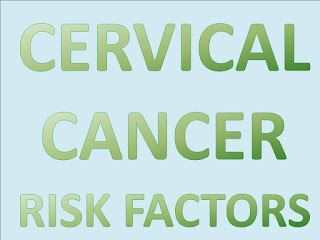WHAT IS CERVICAL CANCER?
Cervical cancer is the cancer which starts in superficial cells of cervix, lower part of uterus which finishes on top of vagina. There are two cells types: columnar cells and squamous cells. Most of cervical cancer is from the last ones.HOW CERVICAL CANCER DEVELOP?
Usually, cervical cancer development is very slow and starts with dysplasia, a precancerous condition which could be detected with a Pap smear and is treatable. It may take years until dysplasia converts into cervical cancer. Most of women who are diagnosed with cervical cancer have not been undergone to regular Pap smears.WHAT CAUSES CERVICAL CANCER?
The principal cause of cervical cancer is human papilloma virus (HPV). HPV is transmitted through sexual contact with someone who has the virus. There are more than 150 related viruses divided in different groups or types. Some HPV types can lead to cancer, as cervical cancer. Others can cause genital warts and most of them just disappear and do not cause cancer or any problem at all. The real problem is when abnormal cells can develop and when high risk types of HPV do not fade away.RISK FACTORS OF DEVELOPING CERVICAL CANCER
So, up until this point we know that having sexual relationship with a person infected with HPV is a risk factor to contract cervical cancer. A risk factor is any attribute, characteristic or exposure of an individual that increases the chance to get a disease, as cancer. Every cancer has a different risk factor. For example, exposing skin to a strong sun light is a risk factor to skin cancer. Smoking is a risk factor to development different cancers, as lung cancer. But to have one or more risk factor does not mean that you will be able to have the disease, but it is an important point to have present and alert.At the time to consider these risk factors, you must be focused on which you could change or avoid (as smoking or HPV infection), instead of focusing on which you could not change (as age or genetic). But it is still important to know these ones to prevent them and to prevent them, in the early stages.
The risk factors in cervical cancer are:
* Human papillomavirus infection:
It is the most important and the most common risk factor for cervical cancer. It spreads from one person to another by sexual contact (vaginal, anal or oral sex) or a direct contact with infected skin. Viruses cause an abnormal growth called papilloma, commonly known as warts. This VIRUSES cannot infect your blood or internal organs; it only infects cells in the surface of the skin.Immunosuppression:
The immune system is responsible to attack any potential malignant cell. So, women with immunosuppression could develop cervical cancer. Immunosuppression could be due to corticosteroid drugs, the human immunodeficiency virus (HIV), organs transplant etc. Any women with immunosuppression might develop into an aggressive cancer faster than another one with a normal immune system. Also infections, like chlamydia infection which is relatively common, could cause higher risk of cervical cancerSmoking:
Women with smoking habits have twice risks to develop cervical cancer against nonsmoker women. Researchers have not found an exact reason. It is also known that tobacco makes the immune system less effective and it is a common risk factor to develop many cancers due to smoking.Age:
Most of women diagnosed with cervical cancer are between 17 and 30 years of age. This factor might be related with the beginning of sexual activity.Long-term use of oral contraceptives (OCP):
Researchers have found that taking OCPs for many times (more than five years) could increase the risk of cervical cancer but they had not found what the relation is. Something very clear is that the risk goes back down after the OCPs are stopped.Multiple full-term pregnancies:
No one knows why this happen but it is a reality. Some researchers think that it is because the hormonal changes during pregnancy make women more susceptible to infections (as HPV infection) or abnormal cells growth.Family history of cervical cancer:
If there was a history of cervical cancer in the family, there is increased risk of having cervical cancer in later life.So, these are the risk factors which may increase the risk of having cervical cancer. You can avoid some but some cannot be cured as it is either genetic or familial. Please avoid the risk factors if possible. Stay safe.
If you like our post please share it, subscribe to our blog through email and if any question comment below. thanks.SUMVIRBLOG








No comments:
Post a Comment